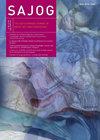Characteristics and outcomes of obstetric patients with maternal sepsis requiring admission to a South African intensive care unit: A retrospective review
IF 0.3
Q4 OBSTETRICS & GYNECOLOGY
引用次数: 0
Abstract
Background. Maternal sepsis is a major cause of maternal mortality worldwide and constitutes one of the leading causes of preventable maternal mortality and morbidity. Puerperal sepsis following a caesarean delivery has been shown to be a leading cause of sepsis in women. Objectives. To describe the epidemiology, risk factors, management interventions and maternal outcome of patients with maternal sepsis admitted to a South African (SA) intensive care unit (ICU) over a 2-year period. Methods. We conducted a single-centre, retrospective review of data of 54 patients admitted to a tertiary referral ICU in SA with the diagnosis of maternal sepsis from 1 January 2015 to 31 December 2016. Clinical characteristics, management interventions and maternal outcomes of patients with maternal sepsis were described and assessed. Results. There were 39 884 deliveries during the study period and 16 060 (40.3%) were by caesarean section (CS). Sepsis was diagnosed in 1.7% ( n =678) of the patients and 8.0% ( n =54) of these patients were admitted to ICU. The median (interquartile range (IQR)) maternal age was 30 (26 - 34) years. Sepsis post CS accounted for 50% ( n =27), sepsis post vaginal birth for 12.9% ( n =7), septic incomplete miscarriages for 24.0% ( n =13), sepsis post preterm deliveries for 9.2% ( n =5) and sepsis post exploratory laparotomy for ruptured ectopic pregnancy for 3.7% ( n =2). Coagulase-negative Staphylococcus was the most commonly isolated organism. The median (IQR) duration of ICU stay was 4 (2 - 6) days. All patients required mechanical ventilation. The mean (standard deviation (SD)) duration of ventilation was 2.5 (1.7) days. More than a quarter of women (29.6%; n =16) required inotropic support, while 90.7% ( n =49) required blood products and 9.2% ( n =5) required renal replacement therapy. Complications in ICU were metabolic acidosis (46.3%), acute kidney injury (40.7%), coagulopathy (25.9%), circulatory shock (12.9%), acute respiratory distress syndrome (9.2%), cardiac arrest (9.2%) and abnormal liver enzymes (7.4%). Mortality was 11.1% ( n =6). Conclusions. Maternal sepsis remains a significant cause of morbidity and mortality. The identification of associated risk factors will help guide appropriate interventions.需要入住南非重症监护室的产科败血症患者的特征和结果:一项回顾性综述
背景。孕产妇败血症是全世界孕产妇死亡的一个主要原因,也是可预防的孕产妇死亡和发病的主要原因之一。剖宫产后的产后败血症已被证明是妇女败血症的主要原因。目标。描述南非(SA)重症监护病房(ICU)住院2年以上的产妇败血症患者的流行病学、危险因素、管理干预和产妇结局。方法。我们对2015年1月1日至2016年12月31日期间入住SA三级转诊ICU诊断为孕产妇脓毒症的54例患者的数据进行了单中心回顾性分析。描述和评估产妇败血症患者的临床特征、管理干预措施和产妇结局。结果。研究期间共有39884例分娩,其中16060例(40.3%)为剖腹产。1.7% (n =678)的患者诊断为脓毒症,其中8.0% (n =54)的患者入住ICU。产妇年龄中位数(四分位间距(IQR))为30(26 - 34)岁。CS后脓毒症占50% (n =27),阴道分娩后脓毒症占12.9% (n =7),脓毒症不完全流产占24.0% (n =13),早产后脓毒症占9.2% (n =5),剖腹探查术后脓毒症占3.7% (n =2)。凝固酶阴性葡萄球菌是最常见的分离菌。ICU住院时间中位数(IQR)为4(2 ~ 6)天。所有患者均需机械通气。平均(标准差(SD))通气时间为2.5(1.7)天。超过四分之一的女性(29.6%;N =16)需要肌力支持,90.7% (N =49)需要血液制品,9.2% (N =5)需要肾脏替代治疗。ICU并发症为代谢性酸中毒(46.3%)、急性肾损伤(40.7%)、凝血功能障碍(25.9%)、循环性休克(12.9%)、急性呼吸窘迫综合征(9.2%)、心脏骤停(9.2%)、肝酶异常(7.4%)。死亡率为11.1% (n =6)。结论。产妇败血症仍然是发病率和死亡率的重要原因。确定相关的风险因素将有助于指导适当的干预措施。
本文章由计算机程序翻译,如有差异,请以英文原文为准。
求助全文
约1分钟内获得全文
求助全文
来源期刊

South African Journal of Obstetrics and Gynaecology
Medicine-Obstetrics and Gynecology
CiteScore
0.40
自引率
0.00%
发文量
5
审稿时长
15 weeks
期刊介绍:
The SAJOG is a tri-annual, general specialist obstetrics and gynaecology journal that publishes original, peer-reviewed work in all areas of obstetrics and gynaecology, including contraception, urogynaecology, fertility, oncology and clinical practice. The journal carries original research articles, editorials, clinical practice, personal opinion, South Africa health-related news, obituaries and general correspondence.
 求助内容:
求助内容: 应助结果提醒方式:
应助结果提醒方式:


